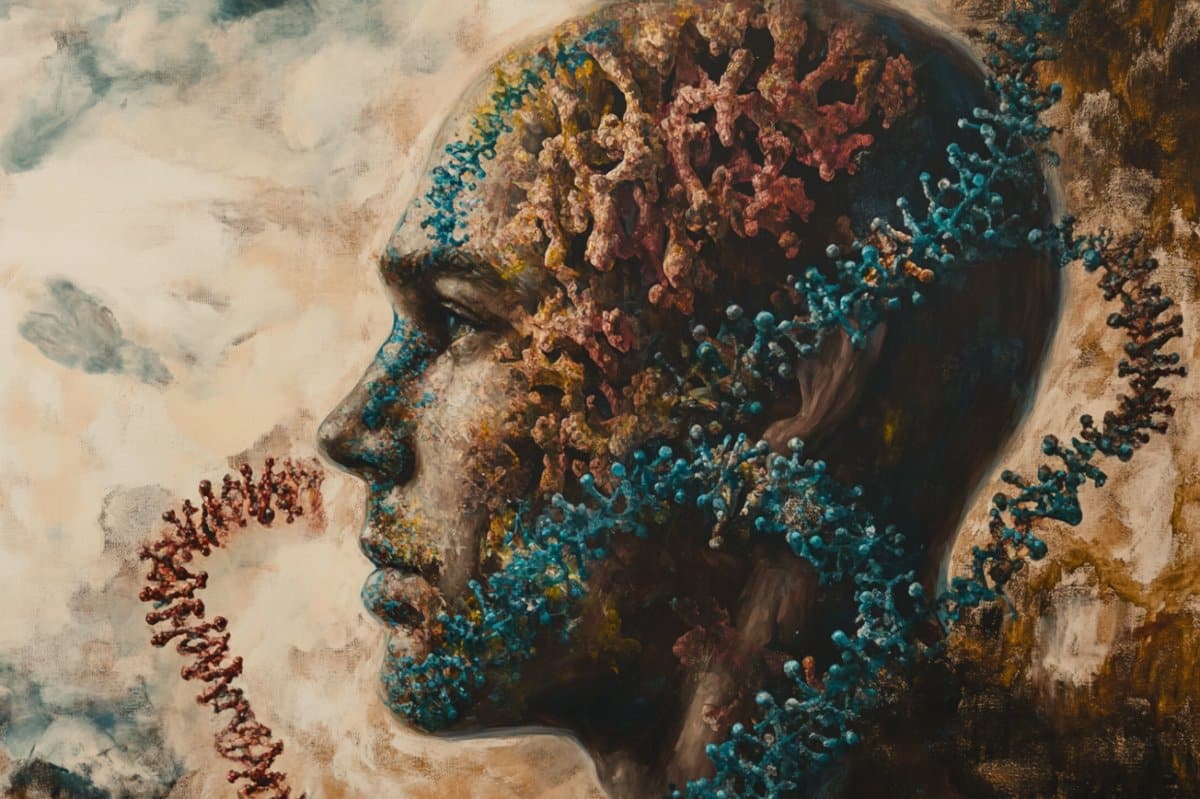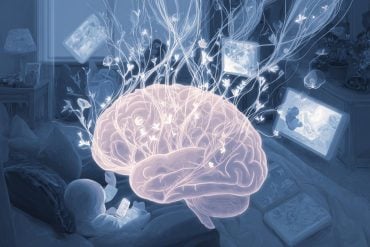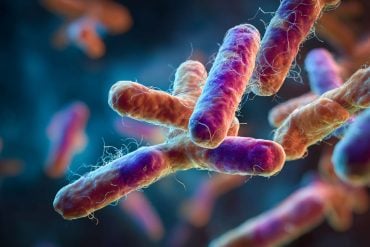Summary: A new study reveals that the way DNA folds inside brain cells plays a critical role in glioblastoma, one of the deadliest forms of brain cancer. Researchers discovered that in cancer cells, genes cluster into 3D “hubs” that coordinate tumor-driving activity, even without mutations.
Disrupting these hubs using CRISPR interference weakened the cancer cells’ ability to grow and organize. These findings suggest that targeting DNA folding and gene regulation in 3D space may unlock new therapeutic strategies for glioblastoma and other cancers.
Key Facts:
- 3D Gene Hubs: Glioblastoma cells form hyperconnected DNA hubs that drive cancer progression.
- CRISPR Disruption: Silencing these hubs reduced tumor-like behavior in glioblastoma cells.
- Wider Impact: Similar hubs were found in 16 other cancer types, suggesting a shared mechanism.
Source: Weill Cornell University
The way DNA folds inside the nucleus of brain cells may hold the key to understanding a devastating form of brain cancer called glioblastoma, suggests a new preclinical study from Weill Cornell Medicine researchers.
The findings, published April 3 in Molecular Cell, offer a new way to think about cancer beyond gene mutations, based on the way that genes are connected and regulated in three-dimensional space.

“Glioblastoma is one of the most aggressive and incurable tumors. Although we know a lot about the mutations and the genes that characterize it, we still have no effective ways to stop it,” said Dr. Effie Apostolou, associate professor of molecular biology in medicine at Weill Cornell, who co-led the study.
“Now, we’re bringing a fresh perspective to the problem. We may have a chance of figuring out the regulatory logic of this cancer and identifying potential control centers that we can target to eliminate it.”
The new perspective involves a basic dichotomy: The human genome is about six feet long when the DNA is stretched end to end, but it must fit into the nucleus of a cell, which is 80 times smaller than a grain of sand.
To make that happen, the DNA folds many times over, bringing together regions that are far from each other on the linear molecule.
“By examining the DNA organization in the 3D space, we uncovered hubs where multiple genetic regions that look like they should be disconnected are actually able to communicate and work together,” said Dr. Apostolou.
In a healthy person, hubs coordinate normal physiological processes like embryonic development.
But when the researchers analyzed glioblastoma cells from different patients, they found that cancer-causing genes clustered together and coordinated with other genes that were not known to be involved in glioblastoma.
“This study shows that the 3D organization of DNA inside tumor cells plays a powerful role in driving brain cancer behavior—sometimes even more than mutations themselves,” said Dr. Howard Fine, the Louis and Gertrude Feil Professor of Medicine in Neurology at Weill Cornell Medicine and director of the Brain Tumor Center at NewYork-Presbyterian/Weill Cornell Medical Center, who co-led the study.
Co-first authors on the study included Dr. Sarah Breves, who works in Dr. Apostolou’s lab and is a surgical resident at NewYork-Presbyterian/Weill Cornell Medical Center, and Dr. Dafne Campigli Di Giammartino at the Instituto Italiano di Tecnologia in Genova, Italy.
3D Gene Hubs: Form Dictating Function
In healthy people, the DNA regions involved in glioblastoma hubs are usually quiet, meaning the cell does not use the genes in their vicinity to produce proteins that impact how the cell functions.
The researchers wondered what would happen to glioblastoma cells if they silenced a suspected cancer-related hub.
With consent from patients undergoing treatment at NewYork-Presbyterian/Weill Cornell Medical Center, they obtained the cells from tumor samples for the study.
When they used a gene editing tool called CRISPR interference to shut down the hub in the glioblastoma cells growing in petri dishes, it triggered a domino effect.
The activity of many hub-connected genes dropped, multiple cancer genes were disrupted and the cancer cells reduced their ability to form tumor-like spheres.
“We were able to alter the oncogenic program of glioblastoma cells and their ability to organize and form something like cancer in the dish,” Dr. Apostolou said.
Not Just About Brain Cancer
The findings in glioblastoma prompted the researchers to examine previously published analyses of 16 different cancer types.
They discovered that these hyperconnected 3D hubs appear to be a feature of most cancers, including melanoma, lung, prostate, uterine and others.
Although each cancer has a unique set of hubs linked, they also found hubs shared across multiple cancer types.
The team observed that the majority of 3D hubs aren’t caused by obvious genetic mutations like broken, amplified or rearranged DNA. Instead, they often form because of epigenetic changes—alterations in how DNA is packaged and how genes are controlled in the cell.
For instance, the protein machinery that binds to specific DNA sequences and influences whether a gene is turned on or off impacts the formation of the 3D hubs.
“By identifying key control hubs in this 3D structure, we’ve uncovered new potential targets for future treatments,” said Dr. Fine, who is also associate director for translational research at the Sandra and Edward Meyer Cancer Center at Weill Cornell Medicine.
“Next, we will explore how these hubs form and whether we can safely disrupt them to slow or stop tumor growth.
“Our research suggests that targeting the epigenetic and spatial genome organization could complement traditional molecular therapies.”
About this brain cancer and genetics research news
Author: Corinne Esposito
Source: Weill Cornell University
Contact: Corinne Esposito – Weill Cornell University
Image: The image is credited to Neuroscience News
Original Research: Open access.
“Three-dimensional regulatory hubs support oncogenic programs in glioblastoma” by Effie Apostolou et al. Molecular Cell
Abstract
Three-dimensional regulatory hubs support oncogenic programs in glioblastoma
Dysregulation of enhancer-promoter communication in the three-dimensional (3D) nucleus is increasingly recognized as a potential driver of oncogenic programs.
Here, we profiled the 3D enhancer-promoter networks of patient-derived glioblastoma stem cells to identify central regulatory nodes.
We focused on hyperconnected 3D hubs and demonstrated that hub-interacting genes exhibit high and coordinated expression at the single-cell level and are associated with oncogenic programs that distinguish glioblastoma from low-grade glioma.
Epigenetic silencing of a recurrent hub—with an uncharacterized role in glioblastoma—was sufficient to cause downregulation of hub-connected genes, shifts in transcriptional states, and reduced clonogenicity.
Integration of datasets across 16 cancers identified “universal” and cancer-type-specific 3D hubs that enrich for oncogenic programs and factors associated with worse prognosis.
Genetic alterations could explain only a small fraction of hub hyperconnectivity and increased activity.
Overall, our study provides strong support for the potential central role of 3D regulatory hubs in controlling oncogenic programs and properties.






